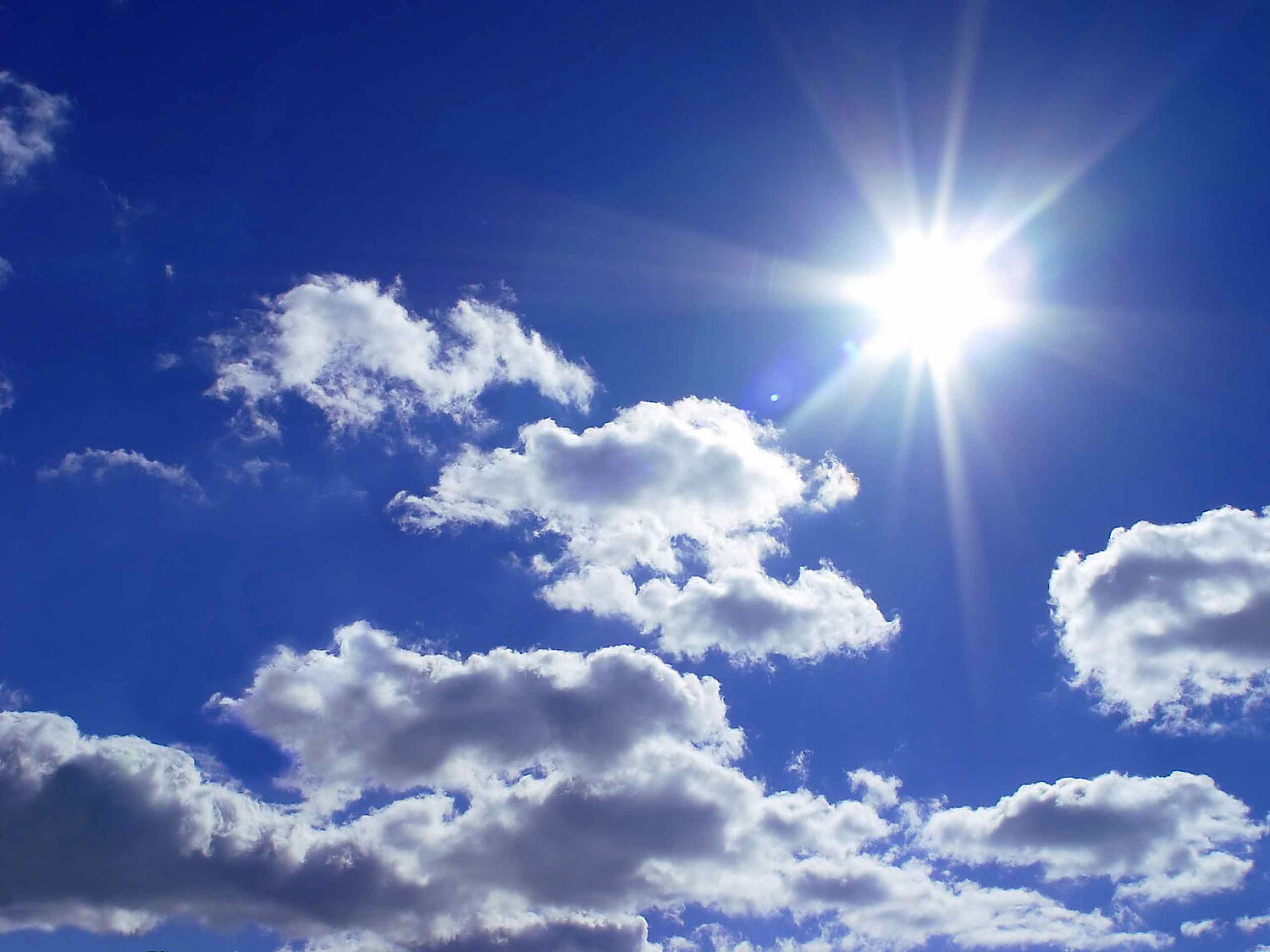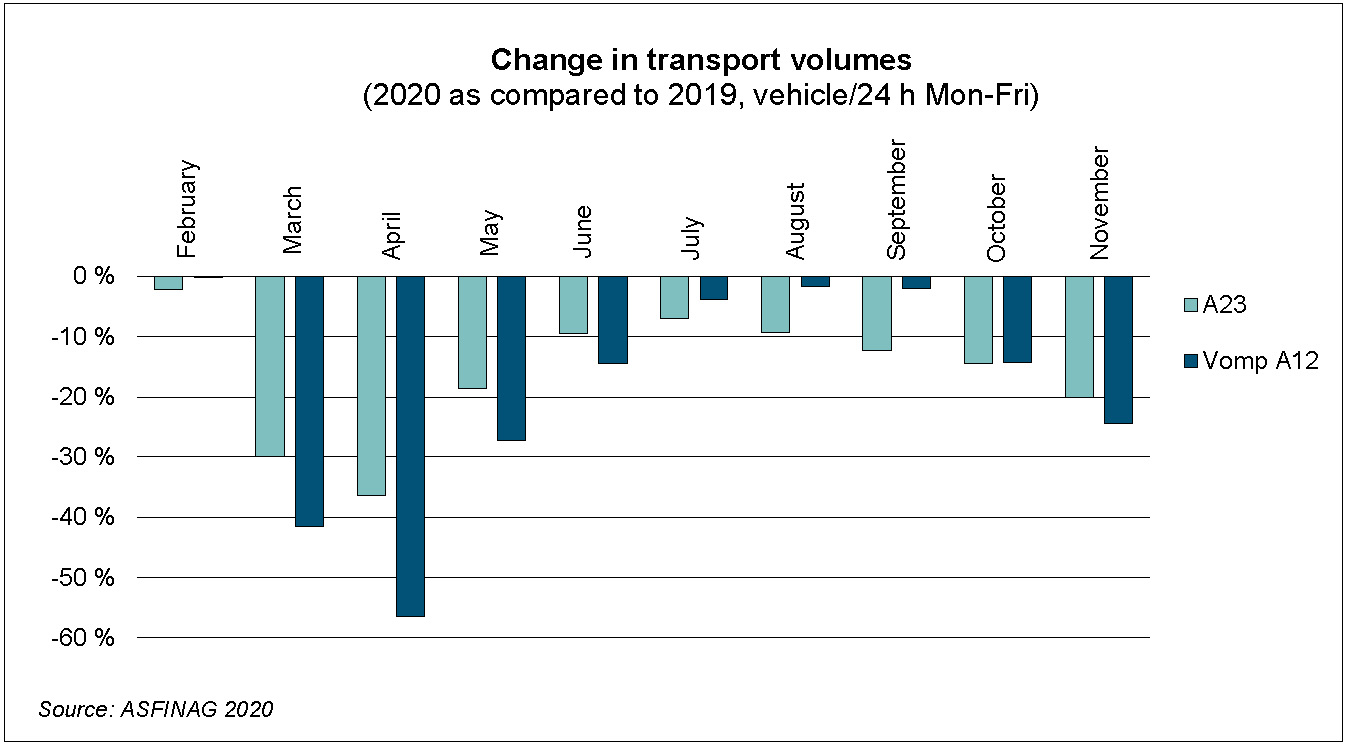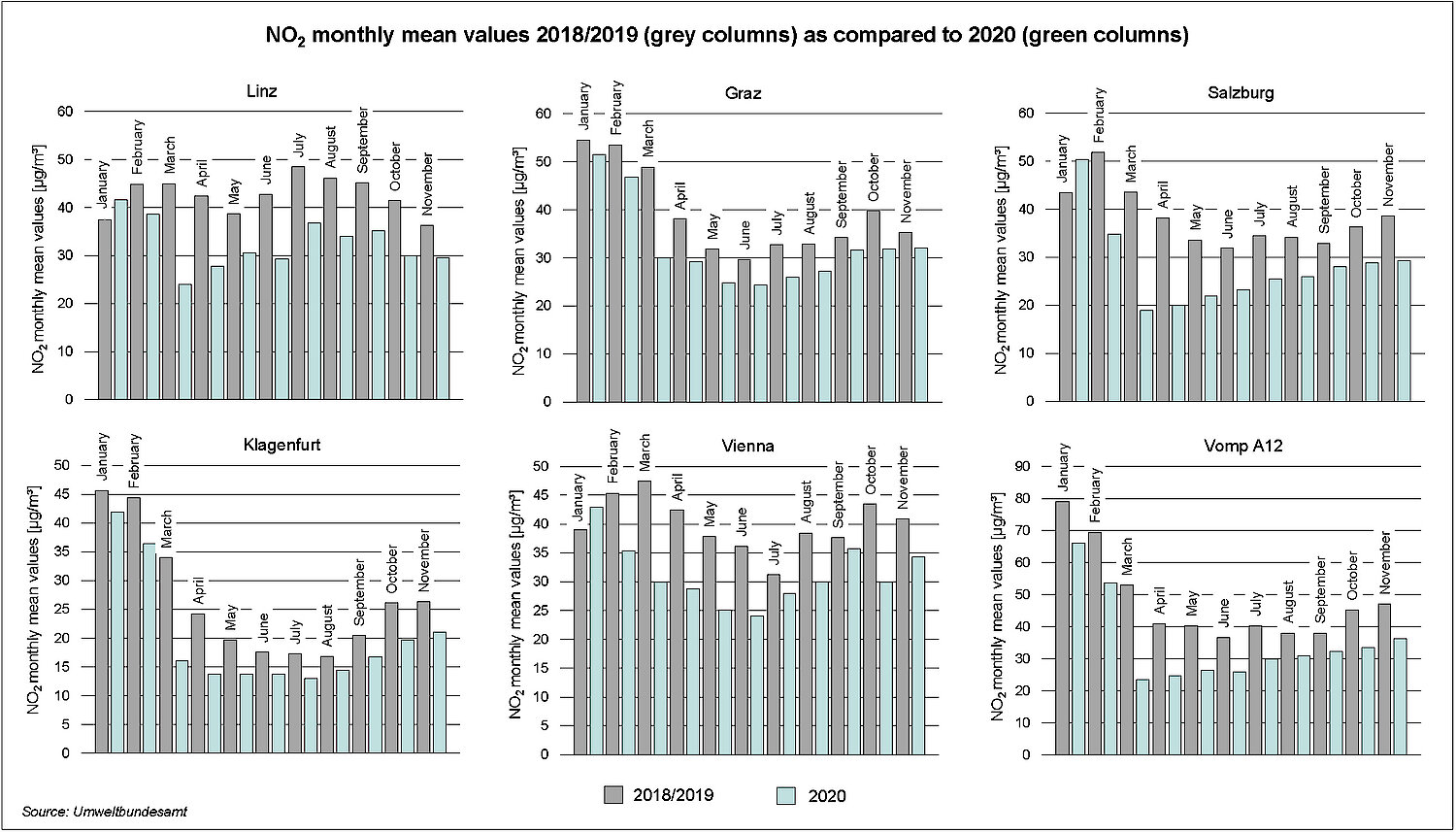Air quality in Austria 2020
Preliminary assessment shows: measures to tackle COVID-19 lead to lower pollutant concentrations

A preliminary assessment of key air pollutant concentrations in 2020, carried out by the Umweltbundesamt (Environment Agency Austria), finds that particulate matter concentrations (PM10) have dropped to their second lowest level since records began in 2000, and nitrogen dioxide (NO2) and ozone (O3) to their lowest since 1990.
Concentrations of nitrogen dioxide and particulate matter recorded in 2020 reflect the impact of measures taken to fight the spread of coronavirus. Especially the travel restrictions and home working have led to a dramatic decrease in transport volumes.
Another important factor determining the low levels of NO2 and PM10 in 2020 was the warm weather that prevailed until mid-March. Above-average temperatures in the winter of 2020 led to a lower demand for domestic heat and a drop in emissions from space heating; on the other hand, conditions were more favourable for pollutant dispersion.
Preliminary results for nitrogen dioxide 2020
Nitrogen dioxide (NO2) is caused predominately by road transport, mainly by diesel vehicles.
In the first lockdown from mid-March to the beginning of May 2020, car traffic volumes were clearly below the levels in previous years, with a decrease of almost 55 % along some road sections. In the summer of 2020, traffic volumes increased and were close to the levels of previous years, before decreasing again in October and November.
The measured NO2 concentrations clearly reflect this decrease in traffic. In the second half of March 2020, the monitoring stations with the highest pollution levels in the regional capitals of Austria saw NO2 concentrations that were 35 % to 56 % below 2018 and 2019 levels, and in November 2020 they were between 2 % and 24 % below the levels of the previous year.
Due to a renewal of the vehicle fleet, the last few years have in general seen a decreasing trend in nitrogen oxide pollution.
Overall, annual mean values for NO2 in 2020 dropped to their lowest level since 1990. For the first time, there were no exceedances of the EU limit value of 40 µg/m³. The limit value plus margin of tolerance set by the Ambient Air Quality Act (35 µg/m³) was exceeded only at the monitoring station Vomp A12, and the limit value of the Ambient Air Quality Act (30 µg/m³) was exceeded at three monitoring stations in Graz, Linz and Vienna.
At European level, some countries and cities saw even more dramatic reductions in their NO2 concentrations, as described in the air quality report of the European Environment Agency.
Provisional results for particulate matter 2020
The COVID-19 related measures have also had an influence on particulate matter concentrations (PM10). However, an assessment of PM10 is more complex than for NO2. Particulate matter comes from different sources, e.g. domestic combustion, traffic, industry and agriculture, and is transported over long distances (e.g. desert dust). In addition, particulate matter can be formed from other pollutants, so-called precursor substances. Estimates of the European Environment Agency show a reduction in particulate matter concentrations of up to 20 % Europe-wide for April 2020.
According to the preliminary results for particulate matter, daily mean values above 50 µg/m³ were recorded on no more than 17 days (monitoring station Don Bosco in Graz) until 30 December 2020. This means that in 2020 and 2019, neither the limit value criterion for PM10 set by the Ambient Air Quality Act (more than 25 daily mean values above 50 µg/m³ per calendar year) nor that of the EU Ambient Air Quality Directive (more than 35 daily mean values above 50 µg/m³ per calendar year) was exceeded.
The annual mean values for particulate matter (PM10 and PM2.5) were also below the levels of previous years in most of the federal provinces. Most monitoring stations saw their annual mean values drop to their lowest levels since the beginning of the measurement series.
The preliminary result for the average exposure indicator (average of PM2.5 annual mean values) is 11.6 µg/m³, a value which is clearly below the reduction target for the period 2018 – 2020 (15.1 µg/m³).
WHO air quality guideline (AQG) for particulate matter concentrations
According to preliminary data, the air quality guideline value for PM10 recommended by the Word Health Organization (WHO; a maximum of three daily mean values above 50 µg/m³) was exceeded at about 34 % of all monitoring stations in Austria in 2020.
Trend for particulate matter concentrations
Large-scale exceedances of the limit value criterion set by the Ambient Air Quality Act were last recorded in Austria in 2010 and 2011.
The main factors in the decrease in concentrations after 2011 are: more favourable meteorological conditions for pollutant dispersion (markedly milder winters with shorter periods of lower temperatures and unfavourable conditions) and, on the other hand, a decrease in emissions of PM10 and precursor substances of secondary particles both in Austria and its eastern and northeastern neighbouring countries, leading to a dramatic decline in contributions from long-range transboundary air pollution.
Preliminary results for ozone 2020
The values for ozone were also below those of previous years. Looking at exceedances of the information threshold (180 µg/m³ as hourly mean value) and the number of daily maximum eight hour mean values (target value for the protection of human health: no more than 25 days with eight hour mean values above 120 µg/m³, averaged over three years), the year 2020 saw the lowest concentrations of the last 30 years. The information threshold was only exceeded on one day at one monitoring station in Vienna (in 2019 on five days at 15 monitoring stations and in 2018 on two days at five monitoring stations). There were only three monitoring stations where eight hour mean values in excess of 120 µg/m³ were recorded on more than 25 days (compared to 48 and 77 monitoring stations in previous years). Model calculations for the whole of Europe suggest that the low ozone concentrations are also connected with the reductions in NOx emissions that resulted from COVID-19 measures.
Preliminary data
This preliminary assessment of ambient air quality in 2020 is based on provisional data from air quality measurements undertaken by the offices of the regional governments in the nine federal provinces of Austria and Umweltbundesamt (Environment Agency Austria), on behalf of the Federal Ministry for Climate Action, Environment, Energy, Mobility, Innovation and Technology (BMK). Quality assurance of the data will be finalised in the second quarter of 2020. The limit values for particulate matter and NO2 and the target values for ozone, as well as the requirements for measuring and reporting, are laid down in the Austrian Ambient Air Quality Act (IG-L). If a limit value is exceeded, the governors of the federal provinces of Austria have to take appropriate measures to reduce pollutant concentrations.


